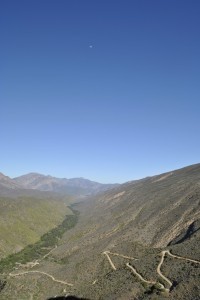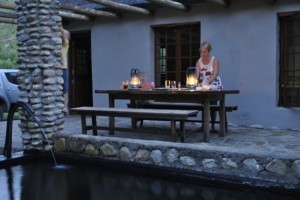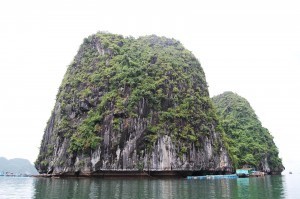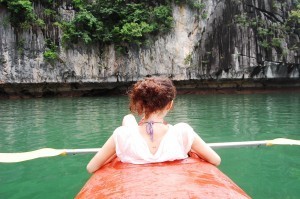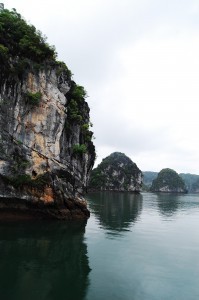Lisa Niver's Blog: We Said Go Travel, page 387
May 24, 2014
Pecos River, New Mexico: The Small Yet Majestic Places
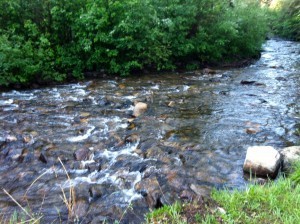 There are some places on earth that truly deserve to be called ‘beautiful.’ Some places that are awe-inspiring in their natural beauty. Some places that we would spend our time without a single regret. But these places are few and scattered jewels among the everyday rock of the rest of the earth. The Pecos River, New Mexico is one of those places. There is nowhere I would rather spend my time than at this remote campground and river, set high in majestic mountains.
There are some places on earth that truly deserve to be called ‘beautiful.’ Some places that are awe-inspiring in their natural beauty. Some places that we would spend our time without a single regret. But these places are few and scattered jewels among the everyday rock of the rest of the earth. The Pecos River, New Mexico is one of those places. There is nowhere I would rather spend my time than at this remote campground and river, set high in majestic mountains.
The soft strains of the river’s gentle music grace my listening ears as I take in the beauty that surrounds me. Upon listening further, I hear the trill of a bird somewhere in the endless green and black forest. As a warm ray of bright morning sunshine warms my goose bump studded skin, I admire the fog rolling off of the tall damp green grass as the sun evaporates the dew. From my folding camp chair, I spectate the beautiful sight of sunlight streaming through the trees overhead.
The sunlight seems to form beautiful stars of light where it breaks through the overhead canopy of dark green pine needles. The morning is cold, but my cup of steaming hot coffee warms me up as I take in all the majesty of this remote campground. The awe inspiring landscape is perfect grounds for thinking, and I ponder how some people travel thousands of miles to find a place that appeals to them, whereas I am lucky enough to live an hour and a half from a small patch of paradise on earth.
I love this campground as much or more than any other place on earth. As I continue thinking I wonder: what about it is so appealing? Is it the remoteness? The landscape? The wildlife? The sounds? No, I believe that what appeals to me about this campground is the sheer humble beauty of the place. It is beautiful in that nothing manmade attempts to bring out the beauty of the campground, river, mountains, everything. The whole scene of this unknown mountain campground and river simply sits in humble, yet breathtakingly beautiful splendor. I would choose this campground over anywhere else in the world.
The crackle of the bramble just across the river snaps me out of my contemplation. I examine the area where the sound came from, but nothing. Not wanting to scare anything off, I keep my gaze on the area without moving. Scrutinizing the area, not daring to move my eyes lest I miss whatever it is, I stay in the position. After a minute or so, my patience is rewarded. A beautiful, monstrous black bear steps out of the undergrowth, sending birds every which way, many of them cawing, trilling, or squawking at the intruder that so rudely disturbed their peace. The bear doesn’t seem to care, and it lumbers over to the river. It lowers its enormous head, and laps up the crystal clear running water.
I can’t see the river well enough, but from experience I know that all the fish in the area just scattered, hardly visible to anything out of the water as they fled. After a minute of lapping, the shaggy black head raises from the water, droplets falling back into the river. It looks around for a minute, then tramps back off the way it came, pushing undergrowth and plowing bramble. I smile, appreciative that I had the chance to see it. It takes a while, but the offended birds finally repopulate the area, the campground back to its normal peace.
Something I love about this amazing place is that the wildlife traverse through, over, and in the Pecos River. The water is a natural attraction to the beautiful creatures of the wood, and I have been lucky enough to see a great quantity of the wood-dwellers whilecamping here. Once again, I am reminded of how beautifully breathtaking this amazing river and campground are. By now, the sun has made its majestic rise into the clear blue sky. Its powerful rays sparkle and shimmer through the proud pines and on the transparent, quickly flowing water of the small yet majestic Pecos River.
About The Author: I, Elijah Malizzo, am thirteen years old and I love to write and read. I have a large family, and I live in New Mexico, U.S.A. I love the outdoors, fishing, camping, hiking, simply being outside, and my love for the outdoors is what inspired me to write this entry.
The post Pecos River, New Mexico: The Small Yet Majestic Places appeared first on We Said Go Travel.
Re-imagining Storytelling with Tripoto
“We are the storytelling animal. ” — Salman Rushdie
My earliest memory, like so many of us, is of stories that were read out to me. We humans are storytellers. All our knowledge is in the form of stories told and re-told in countless ways. We started with cave paintings and telling stories around fire. Epics have been passed on to generations just through word of mouth passing along with them myriad traditions, customs and mythology.
 Cave Painting depicting the Indian epic Mahabharata
Cave Painting depicting the Indian epic MahabharataTHE EVOLUTION OF STORYTELLING
“Words are air, breath and sound wrapped around ideas” — Anonymous

A still from the movie Avatar. 3D Technology is changing the way we tell stories.
The written word is still perhaps the simplest yet the most powerful way of telling stories. However, in the past 100 years technology has enabled new forms of storytelling such as photography, videos, films, 3D technology, maps. In the past 20 years we have witnessed how internet has accelerated the pace of storytelling even further by allowing sharing and re-sharing of stories, and hence knowledge, at an astounding pace.
So what is the future of storytelling? To re-imagine the art of storytelling we have to explore newer mediums that can capture the essence better. Maybe we have to look beyond the internet? Or create new ways of storytelling on the internet? Storytelling must be an extension of a human’s memories and experiences. The process of converting thoughts into stories must be seamless.
IMAGINING THE FUTURE
“One of the greatest mistakes people believe is that technology changes the essence of the audience, because it doesn’t. It changes the way they participate.” — Brian Seth Hurst
Different people have opined on the future of storytelling. I am merely recounting some well known science fiction ideas and adding some ideas that have crossed my mind, on occasions, in the form of small brainwaves:
1. Perpetual life recorders: Imagine everything you saw, heard or imagined could be recorded on a small device in real time and edited and played back. But how would this recorded data be edited and finally presented to others? None of our story telling mediums have the ability to present such information even if it could be recorded. A star trek like holo-deck virtual reality device might be the only way such a story can be re-told or edited.
2. You are in the story: In traditional story-telling mediums we imagine the story, the storyteller and the audience as three distinct elements. Imagine yourself as part of the story — as a character of your choice. Living their lives and understanding their motives. This theme has already been explored in science fiction innumerable times with movies such as ‘Totall Recall’ and ‘Truman Show’ (although in a slightly different way).
3. Characters that converse: What if you could ask your character a question and they could answer it? Building such characters that understand the context of the story and the context of the question requires significant artificial intelligence. In case of a non-fictional story or lets say a travel story this would involve pre-recorded information by the author or a medium of instantaneous communication between the author and the reader.
4. Smell and touch your stories: Our storytelling experience is limited by the fact that while all our senses are used in creating a memory, we can’t use some of them while re-telling these memories in the form of stories. Our sense of Touch and smell deeply affect how we store and recall memories. If we could incorporate these into our storytelling as well the effect would be profoundly different.
A small, yet important segment of storytelling is – travel storytelling. The most vivid memories are created while traveling and yet it is so difficult to re-count travel stories. How can we capture the millions of fascinating travel stories that are being created every year by real travelers? Are photographs, words, maps or even videos sufficient to re-tell a travel story? Why does it always seem paler compared to our actual experience? We set out seeking answers to these questions and launched Tripoto.
TRIPOTO AND THE ART OF TRAVEL STORY-TELLING
“Traveling- it leaves you speechless, then turns you into a storyteller” — Ibn Battuta
Travel stories on Tripoto
Tripoto is a place to share and discover amazing trips and travel stories. While listening to countless enchanting stories of travelers we realized the need for a platform that allows these stories to reach far and wide. With our immense love for travelers we have handcrafted Tripoto. A few nuggets of wisdom we have stumbled on along the way:
A travel story should help the readers re-create the travel experience for themselves if they so desire. Words have to be integrated with maps, videos, directions etc to help the traveler. Travel inspiration must be supplemented with travel information.
The personality of the traveler (author) is as important as the story. The reader wants to establishes a direct connect with the author.
Photo-sharing — the most popular format of sharing travel content is an incomplete form of travel storytelling. It generates wanderlust but no way to satisfy it.
Travel storytelling should be able to express the grandeur of the emotion and feelings of the traveler as closely as possible for the reader. The reader should feel as if they are actually travelling with the author while they read the author’s story.
While some of this may seemingly obvious — its not easy to build something that captures the poetry and grandeur of travel and yet conveys useful information to the reader. It has been difficult trying to balance the needs of different kinds of travel writers, storytellers and readers. While some prefer pictures, others need a map and some can’t do without written text. Balancing the different needs of the creators and the readers has also been a challenge.
Our focus for now is to make travel stories more readable. A travel blog written in a free wheeling way sometimes serves the writer more than the reader. In our opinion every travel story created must be read, re-read and used by at least a 1000 travelers. To enable this we are building powerful search and discovery and a concise and easily consumable format of a story. For now we have chosen an itinerary format to display the travel stories. We showcase the journey of the traveler through images, stories and maps in a structure that is easily usable. The author is as prominent as the story and we let the readers connect with the author easily. In the near future we will try to incorporate more ‘poetic’ elements into itineraries thus more closely resembling the memories of a traveler.
Our vision is to create a platform that enables travel storytelling for everyone — Travelers, bloggers, Independent Guides and even small businesses trying to sell experiential holidays. The stories should do justice to the memories created or promised. — Michael Lyngdoh, Co-founder, Tripoto
While we have achieved much since our product launch in October, a lot still needs to be done. Well, all great things have small beginnings they say. How will we enable all travel storytellers to create something as beautiful as their memories and ideas? A lot of fascinating answers await us. At the intersection of technology, creativity, language and art we shall hopefully find new solutions emerging.
Find Trips from We Said Go Travel on Tripoto: Nepal, Bali, China!
The post Re-imagining Storytelling with Tripoto appeared first on We Said Go Travel.
May 23, 2014
The Sicilian Mafia: A True Crime Travel Guide
Here at We Said Go Travel, we love books! Enjoy an excerpt from THE SICILIAN MAFIA: A TRUE CRIME TRAVEL GUIDE and be transported to Sicily!
A unusual new travel guide to Sicily becomes an illustrated journey to the heart of the Mafia. In The Sicilian Mafia: A True Crime Travel Guide, San Francisco author Carl Russo takes the reader to key landmarks in the history of Cosa Nostra: where the murders happened, where the godfathers lived, and where their victims are buried. The book’s 200 photographs were the result of Russo’s undercover work in Sicily over the course of six years.
Written for tourists and armchair travelers alike, the book is a geographical history of the Mafia on the Italian island of Sicily, the picturesque birthplace of organized crime. The guidebook, the first of its kind in any language, is an adventure for anyone interested in unique travel, Italian history, or the annals.
From the sunbaked fishing villages of the Mediterranean to the darkest alleys of Palermo, western Sicily is the exotic background for disturbing tales of murder and mayhem. Here is an excerpt from Russo’s introduction:
Ethical “trespassing”
The purpose of this book is not to provide the traveler with tips on finding a cheap hotel or a fabulous restaurant. That information is already covered by a surfeit of travel books, websites and mobile applications. This guide is written for the adventurer interested in going beyond Sicily’s amazing beaches, churches and museums. The crime buff in everyone is given a closeup view of the mysteries and savageries of Sicily’s tragic past—and its hopeful future. As much as this book is a traveler’s companion, it is also for the armchair voyager who may never set foot on Sicily’s shores. The stories and images are presented geographically and may be read from start to finish, as narrative strains overlap and crisscross in time.
My focus is on the western half of the island, the true heart of the Sicilian Mafia. The archetypes of the village godfather, the estate enforcer, the racketeer and the hit man all have their origins in the cities of Palermo, Corleone and the surrounding country. From this rustic landscape rose the world’s most infamous crime bosses, whose militias were powerful enough to wage war on the Italian state. From the northwest fishing villages and the land-locked sulphur towns came the gangsters of the American and Canadian mafias—household names to this day. The bloodiest, most tragic and literally earth-shaking events in the history of Cosa Nostra took place in the provinces explored in these pages: Palermo, Trapani, Agrigento and a portion of Caltanissetta.
 This book divides western Sicily into three large sections: the metropolitan area of Palermo, Corleone and its surrounding towns and the coastal areas from Trapani to Agrigento. The numbered chapters represent car tours that may reasonably be taken in a single day. Reasonably, I posit, because car travel in Sicily is daunting even with the aid of a GPS device. Whether negotiating the manic traffic of Palermo, with its ancient labyrinth of streets, or the impossible Escher-like configuration of a hilltop village, much of Sicily remains uncharted by satellite street mapping. The addresses I include will, at best, only partially aid in GPS navigation. The best roadmaps are deficient—no great pity as many city streets and country roads lack signs or even a name. Let the spirit of adventure triumph over frustration.
This book divides western Sicily into three large sections: the metropolitan area of Palermo, Corleone and its surrounding towns and the coastal areas from Trapani to Agrigento. The numbered chapters represent car tours that may reasonably be taken in a single day. Reasonably, I posit, because car travel in Sicily is daunting even with the aid of a GPS device. Whether negotiating the manic traffic of Palermo, with its ancient labyrinth of streets, or the impossible Escher-like configuration of a hilltop village, much of Sicily remains uncharted by satellite street mapping. The addresses I include will, at best, only partially aid in GPS navigation. The best roadmaps are deficient—no great pity as many city streets and country roads lack signs or even a name. Let the spirit of adventure triumph over frustration.
The wisdom of traveling to some of the more trouble-plagued areas, particularly Palermo, is to be questioned, and rightfully so. It is unlikely that a typical tourist willingly strolls the grim halls of the ZEN housing projects or cares very much to see the modern Pagliarelli prison complex. In that sense, I’ve already made the journey and taken the photos so you don’t have to. But to the irrepressible crime aficionado, these places are an essential part of the story, and some may seek them out. As in any big city, tourists should take precautions against petty crime. Purse snatches and muggings are not uncommon in Palermo and Agrigento. Your set of street smarts should be based on a few simple rules: conceal your money, stow your camera when not in use, avoid sketchy streets after dark and have an awareness of your surroundings.
 My two guiding principles while “trespassing” on historical Mafia territory are discretion and respect. The emotional and ethical aspects of “Mafia tourism” come into play especially in the small villages of the interior. Almost invariably, the families of both Mafia antagonists and victims still live there. Some very awful things happened in these places and the memories are still fresh wounds. The vast majority of Sicilians are honest, law-abiding and fun to meet, but it is rude and possibly dangerous to bring up the subject of the Mafia. Never disturb the occupants of the private homes listed in this book. Let courtesy and common sense prevail. Overall, tourists are greeted warmly by Sicilians and they are often quite curious about you. The smaller the village, the more stares you’ll receive. This should not unnerve you—a smile and a Buongiorno! will always be returned. Despite the language barrier, the old Sicilian-speaking pensioners of the piazza will never refuse a friendly handshake.
My two guiding principles while “trespassing” on historical Mafia territory are discretion and respect. The emotional and ethical aspects of “Mafia tourism” come into play especially in the small villages of the interior. Almost invariably, the families of both Mafia antagonists and victims still live there. Some very awful things happened in these places and the memories are still fresh wounds. The vast majority of Sicilians are honest, law-abiding and fun to meet, but it is rude and possibly dangerous to bring up the subject of the Mafia. Never disturb the occupants of the private homes listed in this book. Let courtesy and common sense prevail. Overall, tourists are greeted warmly by Sicilians and they are often quite curious about you. The smaller the village, the more stares you’ll receive. This should not unnerve you—a smile and a Buongiorno! will always be returned. Despite the language barrier, the old Sicilian-speaking pensioners of the piazza will never refuse a friendly handshake.
While I’ve dispensed with general travel advice, it should be noted that those who make the trek in spring will be rewarded with a dazzling display of wildflowers that cover entire hillsides in crimson, burgundy, yellow and white. The weather is pleasantly warm and the price of accommodation is reasonable. In the countryside, you’re never far from an agriturismo, usually a converted farmhouse or palazzo that offers lovely rooms and local cuisine for a fair price. Whenever possible, try to patronize businesses that refuse to pay the “pizzo”—extortion. The growing list of anti Mafia businesses may be found at addiopizzo.org/pizzofree.
The Sicilian Mafia: A True Crime Travel Guide ($18.95) is available in bookstores, on Amazon and from Strategic Media Books.
About the Author: Carl Russo is a San Francisco author who has written for the Oakland Tribune, indieWIRE and other publications. He was a radio producer and disc jockey at KUSF-FM for more than a decade. Russo fell in love with Sicily on his first trip to the island in 1999 and has returned many times since.
The post The Sicilian Mafia: A True Crime Travel Guide appeared first on We Said Go Travel.
May 22, 2014
Punta Tombo – Largest Penguin Colony outside Antarctica
I walked down a sandy path wearing shorts and a t-shirt as I watched penguins lay in the sand seeking reprieve from the sun under the shade of scrub bushes. Travelling was dispelling the assumption penguins live only in cold climates. Lathered with gobs of sun screen, I walked along the dusty paths of Punta Tombo Reserve one hundred and ten kilometers south of Trelew, Argentina.
If wildlife viewing is your thing, this five hundred acre park was one of the best wildlife managed areas I visited in my South American travels. Punta Tombo is home to the largest penguin colony outside of Antarctica. Between September and April thousands of Magellanic penguins nest in their burrows and guard their young.
One of the reasons I found Punta Tombo so enjoyable was the orientation and presence of staff throughout the reserve. Visitors are greeted upon first arrival, walk through a smartly designed museum and are given an orientation. A staff member informs guest not to touch the penguins, throw garbage, smoke, eat food or make loud noises.
These are Magellanic penguins and have a deep red hue to their eyes.
A wide trail with roped boundaries kept all the visitors to one path through the reserve. Staff were stationed all along the reserve and their presence kept visitors following the rules, which made the experience enjoyable for all.
These cute little guys are called cuis. Scurrying quickly about, they can be easily scared dashing under trees and shrubs.
Holding its head high, the Elegant Tinamou boldly prances about pecking at the ground for seeds and insects.
After a high energy day of searching for food, penguins make the walk to their homes.
This one stopped for a scratch along the way.
A hillside where penguins build their burrows.
With a flash of white across their hind ends, these mara’s, or Patagonian Hares, take giant leaps through the sage grasses. I didn’t even know these guys existed before travelling through Argentina. These are now one my new favorite animals.
If you find yourself along the east coast of Argentina and you enjoy viewing wildlife, make sure you check out Punta Tombo Reserve. The park management has done an award worthy job of creating a clean, safe and positive environment for enjoying nature.
* * *
If you go:
Entrance fee to Punta Tombo: $70 ARS pp.
There is no camping in Trelew and we stayed at the only hostel in town: Hostal El Agora, Edwin Roberts 33, (02965), $130 ARS pp.
Car tours, call Sophie, 154583309, the hostel will also call for you. You set up the day(s), place and time and she brings you the car. It should cost somewhere between $450-600 ARS for the day.
The post Punta Tombo – Largest Penguin Colony outside Antarctica appeared first on We Said Go Travel.
May 21, 2014
Hawaii Travels Lead to Career Shift for TV Executive
In August 2013, I had an amazing adventure in Maui with my wife Kathy, our two kids Ben (12) and Leo (10) and my incredible in-laws. This Hawaii adventure changed my life. I had worked as a TV and digital programming executive at networks like Playboy TV and ABC Family and produced reality shows, like American Gladiators.
I felt like I was at a mid-point in my career and wanted to try a new challenge.

jimmyCASE prototype August 2013
I had built a prototype for an iPhone wallet case — a generic iPhone case with a strap of elastic stuck together with blue painters tape. The improvised case could carry my drivers license, credit cards and hotel key card, strapped to the back of my iPhone.
As we traversed the island with the kids from one adventure to the next, snorkeling, surfing, parasailing, zip lining, road-to-hana, I quickly dumped my Costanza wallet, and was carrying everything I needed on the back of my iPhone.
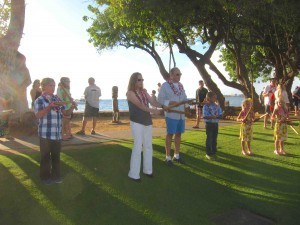
the family that stick dances together…
Spending this time with my family in the relaxed beauty of Maui, I realized that I didn’t want to be an executive working in an office for the few years left with my children at home. I wanted to take them to their after-school activities, make them dinner, and be with my family. I wanted to be a stay at home dad and entrepreneur-in-residence.
When we returned home to Los Angeles, I gave up my corporate career focus and started full time on the launch of jimmyCASE. The case allows you to carry the things you need most (credit cards, drivers license, a little cash) strapped to the back of your phone.

jimmyCASE sewn on old school Singer machine
I’m hoping the launch of this new endeavor will lead to many new adventures with my family. Thank you Maui for showing me the way.
Special Discount for We Said Go Travel reader:
Promo Code: TRAVELWITHjimmy 20% off plus free US shipping. Good through end of May 31, 2014.
More about HAWAII from We Said Go Travel:

The post Hawaii Travels Lead to Career Shift for TV Executive appeared first on We Said Go Travel.
May 20, 2014
Finalists for Inspiration Travel Writing Contest 2014
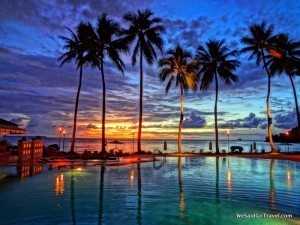
Sunset at Palau Pacific Resort
WRITING CONTEST: Our fourth Travel Writing Contest ended on February 14, 2014 with 505 people from 55 countries involved. The judges and I are happy to announce the fifty finalists! Winners will be announced May 27. The next contest also opens May 27!
PLEASE ENJOY THE ENTRIES FROM THE FINALISTS:
Alexander Heaven and Hellhttp://www.wesaidgotravel.com/heaven-hell-day
Amy An African Adventure Leads to Authentic Livinghttp://www.wesaidgotravel.com/south-african-adventure-leads-authentic-living
Anette Poetry in sand http://www.wesaidgotravel.com/poetry-sand-morocco
Aniket When time stands stillhttp://www.wesaidgotravel.com/time-stands-still-india
Asia The Pedaling Poet and the Perfume Riverhttp://www.wesaidgotravel.com/pedaling-poet-perfume-river-vietnam
Barbara Jorge http://www.wesaidgotravel.com/jorge
Barbara Overcoming Barriershttp://www.wesaidgotravel.com/overcoming-barriers-australiaClare Cafe au Lait http://www.wesaidgotravel.com/france-cafe-au-lait
Daniel Who needs time? A day in Széchenyi thermal bathhttp://www.wesaidgotravel.com/needs-time-day-szechenyi-thermal-bath
Debra Stuck In The Zaire Mudhttp://www.wesaidgotravel.com/stuck-zaire-mud
Dominique Govardhan Hill http://www.wesaidgotravel.com/can-choose-bloom-brazil
Donna Mexico, My Mexicohttp://www.wesaidgotravel.com/mexico-mexico
Ellen Snorkeling with Vikings in Icelandhttp://www.wesaidgotravel.com/snorkeling-vikings-iceland
Emily Meeting the Queenhttp://www.wesaidgotravel.com/meeting-the-queen-2
Erica The United States, One Big Familyhttp://www.wesaidgotravel.com/united-states-one-big-famil
Erica Welcome to Africa http://www.wesaidgotravel.com/namibi
Gabriela Echar Los Perros (Release the Dogs)http://www.wesaidgotravel.com/echar-los-perros-release-dogs-colombia
Helen Reaching for the skyhttp://www.wesaidgotravel.com/reaching-sky
Jesseca NYC, Is the Place to Behttp://www.wesaidgotravel.com/new-york-city-place
Jessica Empty inside http://www.wesaidgotravel.com/empty-inside-zimbabwe
Jessie THE DAILY MIRACLEhttp://www.wesaidgotravel.com/daily-miracle-mongolia
John Solitude amongst Strugglehttp://www.wesaidgotravel.com/solitude-amongst-struggle-tanzania
Jonna Lost & Found http://www.wesaidgotravel.com/lost-found-mexico
Joyce From Deadlines to Donkey Dunghttp://www.wesaidgotravel.com/deadlines-donkey-dung-franc
Julie Flipping the Coin of Fatehttp://www.wesaidgotravel.com/quebec-city-canada-flipping-coin-fate
Katie The melting snows of Kilimanjarohttp://www.wesaidgotravel.com/melting-snows-kilimanjaro-tanzania
Klaudyna Tustan, Ukraine: “Stand Here”http://www.wesaidgotravel.com/ukraine-tustan-stand
Ling Xin Winter’s Womenhttp://www.wesaidgotravel.com/winters-women
Maggie Inspired by the Luck of the Irishhttp://www.wesaidgotravel.com/inspired-luck-irish
Maria Here in America, What’s Outside Your Window?http://www.wesaidgotravel.com/america-whats-outside-windo
Marie-France Macaws in the Amazonhttp://www.wesaidgotravel.com/macaws-peruvian-amazo
Mariska Baines Baobabs: Silent witnesses of timehttp://www.wesaidgotravel.com/baines-baobabs-silent-witnesses-time
Max Queen of the Mississippi: Floating Employmenthttp://www.wesaidgotravel.com/queen-mississippi-steamboa
Miriam Ayers Rock: The wonder of nothinghttp://www.wesaidgotravel.com/ayers-rock-wonder-nothing
Naiya Through the looking glasshttp://www.wesaidgotravel.com/through-the-looking-glass-tanzania
Nandita Mcleodganj, India:Musing over my muse(s)http://www.wesaidgotravel.com/mcleod-ganjindiamusing-muse
Natalie The View from the Tophttp://www.wesaidgotravel.com/view-top
Nishikanta The city that will invade your soulhttp://www.wesaidgotravel.com/city-cambodia-invades-soul
Paul A DREAM COME TRUEhttp://www.wesaidgotravel.com/dream-come-true-guyana
Rachael Take Me Back To The Floor of The Forest: Algonquin National Park http://www.wesaidgotravel.com/take-back-forest-algonquin-park-canada
Radhika The Dargah of Hazrat Nizamuddinhttp://www.wesaidgotravel.com/dargah-hazrat-nizamuddin
Regina My Promise to Mamaw Rose “In Memory” story of My Papa Jim http://www.wesaidgotravel.com/promises-italy-rv-camper-usa
Rhonda Finding Inspirationhttp://www.wesaidgotravel.com/finding-inspiration-mexico
Sarah Second Beach, Washington:Natural Inspirationhttp://www.wesaidgotravel.com/second-beach-washington-usa-natural-inspiration
Sophie Tiger’s Blood With the King of Heartshttp://www.wesaidgotravel.com/tigers-blood-king-hearts-per
Stephanie No Regrets http://www.wesaidgotravel.com/regrets-u
Stephen Don’t know that either!http://www.wesaidgotravel.com/feeling-family-tajik-wakha
Thanh My Prayer Wheel http://www.wesaidgotravel.com/prayer-wheel
Wendy Rubber Time in Indonesiahttp://www.wesaidgotravel.com/rubber-time-indonesia
Winona Maria beauty in its simplest formhttp://www.wesaidgotravel.com/beauty-simplest-form
Read all the Inspiration Contest stories: Click here.
Thank you to everyone for your participation and for sharing your incredible stories! All of us are honored to be able to read and learn from you.
First, Second and Third place winners will be announced next Tuesday May 27, 2014!
Our summer 2014 Writing Contest will begin May 27, 2014.
Thank you for your support. Connect on Facebook, Google+, Instagram, LinkedIn, Pinterest, SlideShare, Twitter, and YouTube.
Thanks again! Lisa (Click here to sign up for this newsletter. )
The post Finalists for Inspiration Travel Writing Contest 2014 appeared first on We Said Go Travel.
Karoo, South Africa: To The Hell and Back
To The Hell and back
Names tend to rub off on the holder because of the magnetic power within the spoken word, and it was on the road to The Hell that I boarded this thought train. Why would anyone name their dwelling place after torture and misery? Our trip to The Hell in the Karoo region of South Africa was an unforgettable journey of discovery and wonder.
The Gamkaskloof or The Hell is a narrow and extremely isolated valley in the Swartberg mountain range that is 20 miles long and at most only 600 feet wide. It was first discovered and inhabited by the San Bushmen, and in 1830 a farmer wandered into this remote and fertile piece of earth and made it his home. Soon other families followed and the community grew to around 160 individuals.
It was only in 1962 that a road was built connecting this community with the outside world. For more than a century the ‘klovers’, as they called themselves, had to journey over the mountains on horseback to reach civilization. With the road making it easier to get around, the last farmer left Gamkaskloof in 1991 and it was declared a national monument in 1997.
The closest town is the quaint village of Prince Albert and from there it is 37 miles, two and half hours drive to the entrance of The Hell. We had to stock up for our expedition and bought some homegrown lamb rib cutlets, fynbos honey (made of indigenous wild flowers) and fresh bread.
C.S. Lewis said that the safest road to hell is a gradual one with gentle slopes. In this case the road to The Hell was a dirt road with steep slopes and sharp switchbacks, dropping a hair raising 3000 feet down into the valley. The views are extraordinary, jaw dropping and nail biting all in one.
We reached the only kiosk and restaurant in The Hell after three hours and were thrilled to get out of the car. The air was warm and filled with a strange kind of antagonism. We were the only people there and the place looked deserted. I went into the shop and saw someone packing jam onto a shelf. To my amazement, the owner of the kiosk was the last born and bred ‘klover’ that is still staying there. We looked at photos of how life was like in The Hell and despite of what you may think, the residents had smiles on their faces.
Our final destination was a restored original farm dwelling an hour’s drive from there. We saw no other people on the way and with my vivid imagination a Stephan King bestseller played out in my mind. The thatched roof cottage was rustic indeed, complete with a touch of spider webs. We shared a small splash pool with a family of frogs, but we gave one another space to escape the sweltering heat.
Night time was the pinnacle of my internal journey and this is where I disembarked the train to enjoy the moment. Majestically the Swartberg Mountains sheltered us from both sides and the multitude of stars made me feel very small and totally insignificant. With the only available technology reduced to a flickering flame of a weather-beaten paraffin lamp, we found ourselves deep inside this isolated place called The Hell. We savored a meal of lamb, bread and good South African wine and felt a heavenly contentment around our humble feast.
We slept in absolute silent darkness, and early the next morning before the first rays of sunlight could reach us down below, we were already outside exploring our new found travel treasure. The birds welcomed the new day and it was as if I wanted to hush them, asking them not to tell about the rare jewel we discovered. I was concerned that people will not deal with this piece of land with the necessary respect and understanding it deserves.
On our way back, we visited the old school and visitors’ center. It was there my thought train crashed as I discovered the truth about where the name, The Hell, came from. An animal inspector that once traveled down the mountain described the exceptionally difficult journey as “hell”. Even though the residents despised the name, it got stuck. Who knows, if the animal inspector came down from the mountain with a different perspective, this place could just as easily be named The Heaven. With these wise words of Oscar Wilde, I laid my thoughts to rest as we took the road leading out of The Hell into the light.
“We are each our own devil and we make this world our hell.” Oscar Wilde
The post Karoo, South Africa: To The Hell and Back appeared first on We Said Go Travel.
May 19, 2014
Mts. Iglit-Baco, Philippines: Into the Savannas

Mts. Iglit-Baco National Park in the island of Mindoro is an ASEAN Heritage Park, and is presently in the tentative list for a possible inclusion to the UNESCO World Heritage List. This natural park that covers practically the central region of the island is largely of grassland montane forest type. Though I have climbed many other taller mountains before, Mts. Iglit-Baco’s main challenge is that of being exposed to the scorching heat of the sun for the most parts of the trekking.

The park is home to one of the oldest indigenous people in the Philippines, the Mangyan. This photo was taken in Tamisan village, one of the lowland Mangyan settlements within the park.

Going deeper into the forest and higher to the mountains, our team encountered a few Taubuid or Buid (the highland Mangyan people). This group of Mangyan still observe a more traditional way of covering themselves through a loincloth known as bahag. The highland Mangyan people are known to the lowlanders as pipe smokers. They also have been documented to still practice an ancient writing system, a paleograph. In 1999, the Buid syllabary, along with the Mangyan Hanunoo, Tagbanua, and Pala’wan, was listed in the register of the Memory of the World under the collective title of The Philippine Paleographs.

Some highland Mangyan people still practice slash-and-burn or swidden agriculture methods. Locally known as kaingin, this tradition puts high premium in proper crop and forest management, as well as in maintaining the right ecological balances and natural rhythms involved in the process. When done properly and in moderation, this mode of farming is a sustainable and effective land-use procedure.

The national park is the last remaining refuge of the largest bovine in the country, the tamaraw (Bubalus mindorensis). These animals are listed as critically endangered by the IUCN, with present count at around 230 only. These are distinct from other local buffaloes due to their short v-shaped horns, quickness, and smaller physique. Other endemic animals and plants also call this park their home, thus making the park a center of endemism and biodiversity.

This photo was taken somewhere in the central area of the park when we made a short stop on our way to the confluence of the three rivers that traverse the strict nature reserve zone. Interestingly, despite the altitude, the rivers are home to some fish and prawns.

One of the park rangers (a lowland Mangyan) doubled as our guide for our entire stay in Mts. Iglit-Baco. He treats the whole forest as a sacred space. It is part of his job to make sure that there is no poaching happening in the area — a clear and present threat happening almost round the clock.

We stayed in the park for four nights, of which two were spent bunking in the warm homes of Mangyan elders, an experience that allowed us to see how their daily lives shape up. The other two nights were spent at the Ranger Station 3, where we woke up to the view of wild tamaraws grazing the grasslands.
The post Mts. Iglit-Baco, Philippines: Into the Savannas appeared first on We Said Go Travel.
May 18, 2014
Somewhere to Sleep: Catba Island, Vietnam
Darkness surrounds me, and I am alone.
Rain pounds down around me, and I know that my backpack is getting wet; I lost my pack cover a few weeks ago to a gust of wind. I feel a building sense of dread – will I find a place to sleep tonight?
I had left my friends in Hanoi, who sought out the temples and history of Hue. I was headed towards the promising adventure of limestone cliffs that jutted straight up out of the ocean. I wanted to go rock climbing, and I knew northern Vietnam was famous for it.
After a motorcycle taxi, bus, and ferry, I landed at Cat Ba Island after dark. I refused to carry a smartphone, or a guidebook, and had stubbornly decided to find my own accommodation upon arrival. It’s more fun that way, right?
But in this moment, I was not so optimistic. Here I was wandering the streets, alone at night, looking for a place to stay. What would my parents say?
As I trudged up the steep street, a motorbike approached me slowly from behind. At first I was apprehensive, and my paranoia kicked in: It’s late at night, and a stranger on a motorbike is following you… be careful!
I immediately noticed that the person driving the motorbike was female. As if she could read my mind, she told me in well-practiced English that she had a room to offer behind her house.
I looked into her eyes and felt a connection. Just from this one exchange, I trusted her. So I climbed on the back of her bike, and she took me a few blocks up the street to her house. Turning left into her driveway, I followed her up the stairs, and as soon as I saw her home, I had no doubts that I was safe.
I was greeted by her husband and daughter, who were happily surprised to see a tourist in their home.
Sure enough, there was a spacious and clean room behind her house, which she offered to me for $8/day, which I later learned was much cheaper than most of the hotels in the area. I was happy to support an individual and her family rather than a hotel. I was the first American to have stayed with her, she proudly told me as she asked me to sign her guestbook.
For the next few days, I went rock climbing on cliffs that seemed to grow out of the ocean. I kayaked around miniature mountains, returning each night to be greeted my by surrogate Vietnamese family.
When I left, I gave them a postcard from California as a parting gift. She liked it so much that she gave me some Vietnamese candy in return.
It’s not easy to trust a stranger. It goes against what society teaches us is safe. But what is a stranger, really? To me, everyone is my friend until proven otherwise. And in my two years of travel, never once did anyone steal anything from me. Never once was I taken advantage of. All throughout New Zealand, Australia, and Southeast Asia, I was shown hospitality and kindness, and that’s what I’ve learned to expect from people.
The world can be a big, scary place, depending on your point of view. For me, I consciously choose to see it differently. I’ve decided I can go anywhere in the world and make friends. And so far, it’s worked!
The post Somewhere to Sleep: Catba Island, Vietnam appeared first on We Said Go Travel.
May 17, 2014
Brazil: Unplanned plans
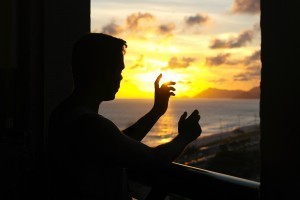 Isn’t it funny when you do one thing for so long, change your routine completely and learn to adapt your wants and needs- just as human nature intended, ignorant of nurture but solitarily relying upon nature itself when we adapt to our surroundings and having all the power to change whatever we deem necessary. As a traveller we adapt to not needing certain things.
Isn’t it funny when you do one thing for so long, change your routine completely and learn to adapt your wants and needs- just as human nature intended, ignorant of nurture but solitarily relying upon nature itself when we adapt to our surroundings and having all the power to change whatever we deem necessary. As a traveller we adapt to not needing certain things.
Moving from one place to another and learning about different cultures and all the while having nothing more than what fits on your backpack, allows you to appreciate the things we maybe once took for granted: comfort- in beds and in situations, routine- in every day activities and in what we eat. Travelling is about learning new things and experiencing new experiences. You meet people who influence your thoughts and feelings and you adapt to new habits and ways of living, purely by putting yourself out of your comfort zone. But what are we all looking for? When I started travelling I wasn’t looking for anything more specific than anything and everything, but then when the statement was pursed upon me, “Well, maybe you haven’t found what you are looking for…” It made me think…
But maybe I have. Maybe this addiction was exactly what I was looking for.
Back then, the reason I started travelling was to broaden my horizon. I’t’s an odd feeling to have experienced, but in my heart I knew I had never belonged, at least not the way I wished to be. I never felt that I had a place where I could have purpose or most importantly inspiration. It’s unusual for me now to reflect because when I left I knew nothing about the world except that I wanted to find my place within it.
You can be whoever you want to be when you travel. You can live the life you have always wanted to live. You can change your personality and pretend to have lived another life, effortlessly. I only wanted to become myself. And finally after travelling I did. Travelling became my routine. Meeting new people and staying in new places. I learnt a lot about myself. My strength in dealing with difficult situations and my abilities to problem solve. Abilities that were forcefully and simultaneously successfully put into action. I met new people who helped me to develop my personality, one that has been overshadowed my entire life. These people, these places, these experiences helped me to develop myself, and without talking in clichés, they enabled me to find myself: finding out who I truly was on the inside. I learnt to love myself and I was happy in my own skin. I learnt that sometimes we make the right decisions and other times we learn from our mistakes, but the choices we make can never be deemed as bad, if made with good will, because the lessons learnt and the luck earnt are the things that build our individual character and enables us to be different to one another.
Its true when they say that you can’t love anything truly before you can love yourself. The love I found for myself- for my entire being- being comfortable and confident enough within myself to be exactly who I was, allowed me to fall in love with many places, and many people; both romantically and not. I learnt that love is much more than infatuation but also a conjunction of respect and desire. Desire not only sexually but the desire the learn and teach and the desire to just be.
The desire to stay.
I have now learnt and adapted my being so that nothing is really foreign to me. Not much really shocks me and not much can really affect me in a dramatically negative way. I have learnt to appreciate learning because every experience can be learnt from. I am not academic, it still shocks many people that I have never studied in a university and that I don’t have a degree, but instead I choose to learn from the world in which I consume every single day.
But then my heart stopped, figuratively of course, because something was foreign. I couldn’t say what I wanted to say because I had no way of expressing it. I knew not the actions nor the words. So I denied them all and shut them all out. My guard came up stronger than it ever had before and I ran, as fast and as far away as I could. The feelings then followed me everywhere I went and I learnt that these feelings couldn’t be ignored. When I ran they were stronger than ever and when I braced myself to return they never paused, but instead grew stronger. I was terrified but I discovered that the ignorance terrified me more. I was in love with Rio de Janeiro, and I knew that I couldn’t be happy unless I made the choice to call this incredible city my new home.
The post Brazil: Unplanned plans appeared first on We Said Go Travel.
We Said Go Travel
We Said Go Travel is a global community of over sixteen hundred writers with articles from every continent.
Stories are shared with photos and video from a perspective of the transformative power of travel. We Said Go Travel has hosted live and online events as well as travel writing contests around the world. ...more
- Lisa Niver's profile
- 57 followers












